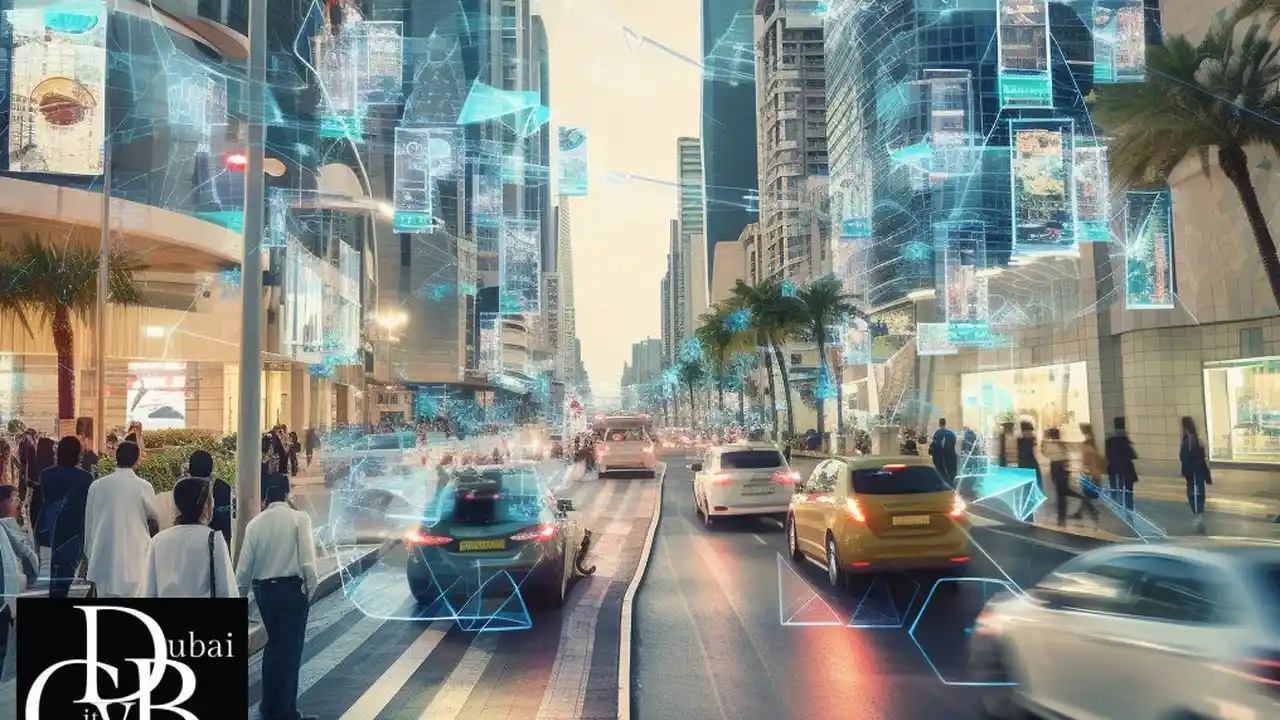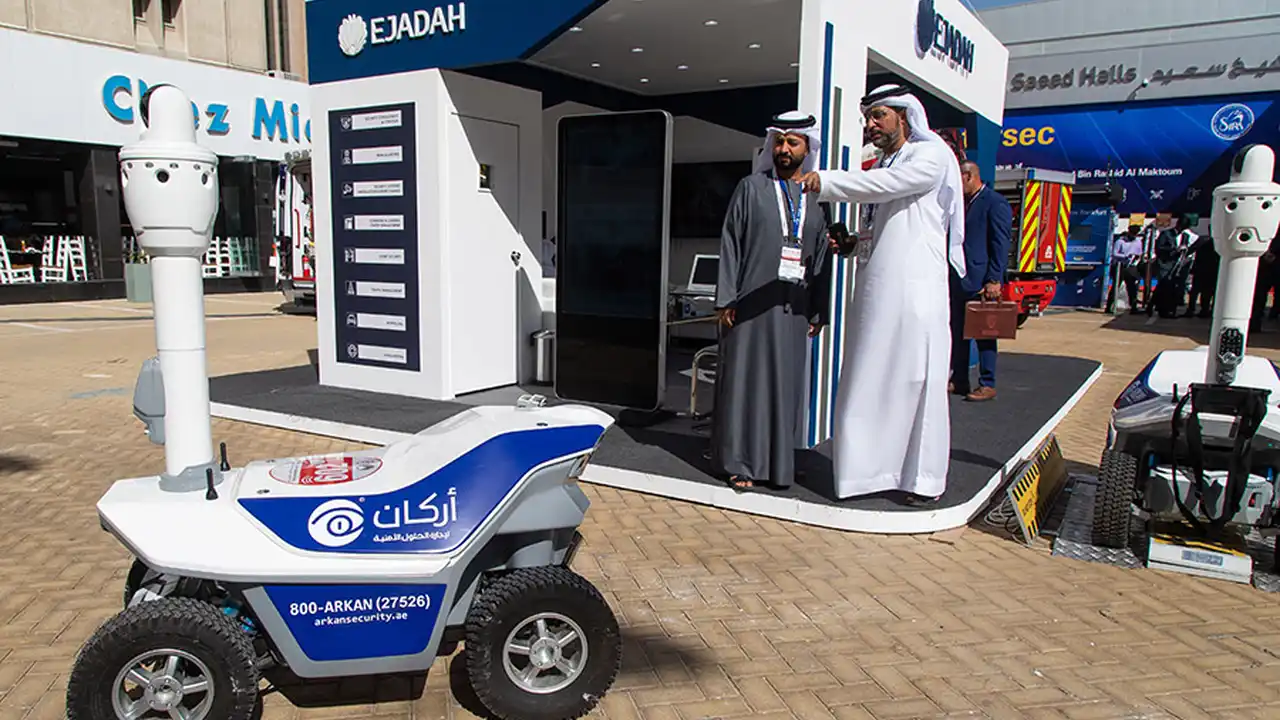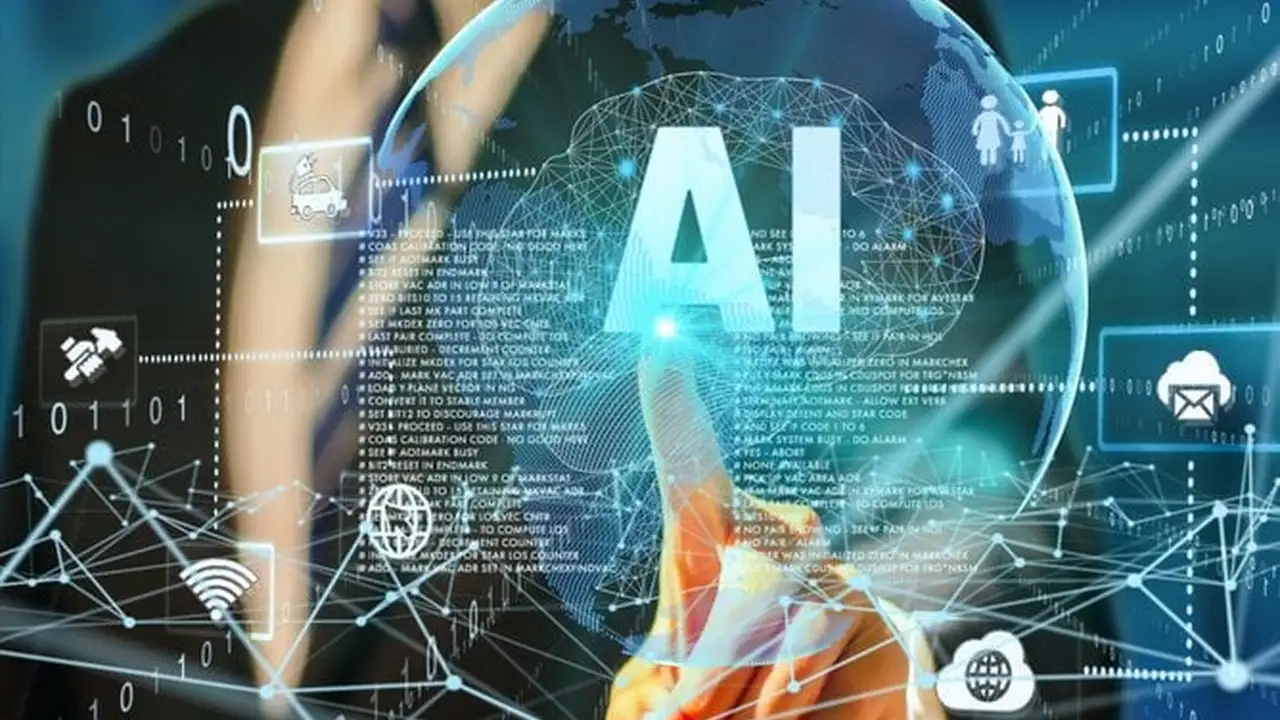5 Ways AI Is Transforming Dubai's Infrastructure

Dubai, a city synonymous with innovation and futuristic ambition, is rapidly integrating Artificial Intelligence (AI) into its infrastructure. From streamlining traffic flow to enhancing public safety and optimizing energy consumption, AI is not just a buzzword in Dubai; it's a tangible force reshaping the city's landscape and the lives of its residents. Let's delve into five significant ways AI is transforming Dubai's infrastructure, examining specific examples, product recommendations, and real-world applications.
AI Powered Traffic Management Systems in Dubai
Dubai's Roads and Transport Authority (RTA) is at the forefront of implementing AI-driven traffic management systems. The goal? To alleviate congestion, improve traffic flow, and reduce commute times. These systems leverage a network of sensors, cameras, and data analytics to monitor traffic patterns in real-time. AI algorithms then analyze this data to dynamically adjust traffic signals, optimize routes, and provide drivers with up-to-the-minute information about traffic conditions.
One notable example is the use of AI to predict traffic bottlenecks before they even occur. By analyzing historical traffic data, weather patterns, and event schedules, the system can anticipate potential congestion hotspots and proactively adjust traffic signals to prevent or mitigate delays. This proactive approach is a significant departure from traditional reactive traffic management systems.
Product Recommendation: Siemens Yunex Traffic Sitraffic Scala
For cities looking to implement similar AI-powered traffic management systems, Siemens Yunex Traffic Sitraffic Scala is a highly recommended solution. This adaptive traffic management system uses AI and machine learning to optimize traffic flow in real-time, reducing congestion and improving air quality. It integrates seamlessly with existing infrastructure and offers a comprehensive suite of features, including predictive analytics, adaptive signal control, and incident management.
Use Cases:
- Reducing traffic congestion during peak hours.
- Optimizing traffic flow around major events and construction zones.
- Improving emergency response times by clearing traffic routes.
- Providing real-time traffic information to drivers via mobile apps and navigation systems.
Product Comparison: Sitraffic Scala vs. Kapsch TrafficCom EcoTrafiX
While Sitraffic Scala is a leading solution, Kapsch TrafficCom EcoTrafiX is another noteworthy contender. EcoTrafiX also utilizes AI for traffic management but focuses heavily on data-driven insights and predictive modeling. Sitraffic Scala is generally considered to have a more robust real-time adaptive control system, while EcoTrafiX excels in long-term planning and strategic traffic management. The best choice depends on the specific needs and priorities of the city.
Pricing: Pricing for both Sitraffic Scala and EcoTrafiX varies significantly depending on the size of the city, the scope of the implementation, and the specific features required. A detailed consultation with the vendors is necessary to obtain accurate pricing information. Expect initial investment costs in the millions of dollars for a comprehensive city-wide implementation.
AI Enhanced Public Safety and Security in Dubai
Dubai is committed to maintaining a high level of public safety and security, and AI is playing a crucial role in achieving this goal. AI-powered surveillance systems are being deployed throughout the city to monitor public spaces, detect suspicious activities, and respond to emergencies more effectively.
These systems utilize advanced video analytics to identify potential threats, such as unattended packages, suspicious movements, and unauthorized access to restricted areas. AI algorithms can also analyze facial expressions and body language to detect signs of distress or aggression, allowing security personnel to intervene proactively.
Dubai Police is leveraging AI to enhance its crime-fighting capabilities. AI-powered crime prediction models are being used to identify high-crime areas and allocate resources more effectively. AI is also being used to analyze crime data and identify patterns, helping investigators solve crimes more quickly.
Product Recommendation: BriefCam Video Analytics Platform
For enhancing public safety through video surveillance, the BriefCam Video Analytics Platform is a strong recommendation. This platform uses AI and machine learning to analyze video footage in real-time, identifying objects, people, and events of interest. It offers a range of features, including facial recognition, object detection, and behavior analysis.
Use Cases:
- Detecting suspicious activities in public spaces, such as unattended packages or loitering.
- Identifying potential threats, such as weapons or explosives.
- Tracking suspects and vehicles in real-time.
- Improving emergency response times by providing first responders with real-time situational awareness.
Product Comparison: BriefCam vs. Avigilon Appearance Search
Avigilon Appearance Search is another popular video analytics platform. While both platforms offer similar features, BriefCam is generally considered to have a more user-friendly interface and a broader range of analytical capabilities. Avigilon, on the other hand, is known for its high-quality video resolution and its integration with other Avigilon security products. The best choice depends on the specific needs and technical expertise of the organization.
Pricing: Similar to traffic management systems, pricing for video analytics platforms varies depending on the number of cameras, the features required, and the level of support needed. Expect to pay anywhere from a few thousand dollars to tens of thousands of dollars per camera for a comprehensive video analytics solution.
AI Optimizing Energy Consumption in Dubai's Infrastructure
Dubai is committed to sustainability and reducing its carbon footprint. AI is playing a key role in optimizing energy consumption across various sectors, including buildings, transportation, and utilities. By analyzing energy usage patterns, AI algorithms can identify areas where energy can be saved and automatically adjust settings to optimize efficiency.
For example, AI-powered building management systems can automatically adjust lighting, heating, and cooling based on occupancy levels and weather conditions. These systems can also monitor energy consumption in real-time and provide alerts when energy usage exceeds pre-defined thresholds.
Dubai Electricity and Water Authority (DEWA) is using AI to optimize the performance of its power plants and distribution networks. AI algorithms are being used to predict electricity demand, optimize power generation, and detect and prevent equipment failures. This helps to ensure a reliable and efficient supply of electricity to Dubai's residents and businesses.
Product Recommendation: Johnson Controls Metasys Building Automation System
For optimizing energy consumption in buildings, the Johnson Controls Metasys Building Automation System is a highly regarded solution. This system uses AI and machine learning to monitor and control various building systems, including HVAC, lighting, and security. It offers a range of features, including energy monitoring, predictive maintenance, and automated control strategies.
Use Cases:
- Reducing energy consumption in buildings by automatically adjusting lighting, heating, and cooling.
- Optimizing the performance of HVAC systems by predicting equipment failures and scheduling maintenance.
- Improving indoor air quality by monitoring and controlling ventilation systems.
- Reducing water consumption by detecting and preventing leaks.
Product Comparison: Metasys vs. Siemens Desigo CC
Siemens Desigo CC is another leading building automation system. Both systems offer similar features, but Metasys is generally considered to be more user-friendly and easier to integrate with existing building systems. Desigo CC, on the other hand, is known for its scalability and its ability to manage large and complex building portfolios. The best choice depends on the size and complexity of the building or portfolio, as well as the technical expertise of the building management team.
Pricing: The cost of a building automation system depends on the size and complexity of the building, the features required, and the level of integration with existing systems. Expect to pay anywhere from a few thousand dollars to hundreds of thousands of dollars for a comprehensive building automation solution.
AI Powered Public Transportation in Dubai
Dubai is investing heavily in public transportation, and AI is playing a crucial role in making public transportation more efficient, convenient, and sustainable. AI-powered systems are being used to optimize bus routes, predict passenger demand, and provide real-time information to commuters.
The Dubai Metro is already highly automated, and AI is being used to further enhance its performance. AI algorithms are being used to optimize train schedules, predict maintenance needs, and improve passenger safety. The RTA is also exploring the use of autonomous buses and taxis, which would further reduce traffic congestion and improve the efficiency of public transportation.
Product Recommendation: Optibus Platform
For optimizing public transportation operations, the Optibus platform is a strong recommendation. This platform uses AI and machine learning to optimize bus routes, predict passenger demand, and improve the efficiency of public transportation networks. It offers a range of features, including route planning, scheduling, and real-time tracking.
Use Cases:
- Optimizing bus routes to reduce travel times and improve efficiency.
- Predicting passenger demand to ensure that buses are adequately sized and scheduled.
- Providing real-time information to commuters about bus locations and arrival times.
- Improving the reliability and punctuality of public transportation services.
Product Comparison: Optibus vs. Tracsis PLANit
Tracsis PLANit is another popular public transportation planning and scheduling platform. While both platforms offer similar features, Optibus is generally considered to be more user-friendly and to have a more advanced AI engine. PLANit, on the other hand, is known for its robust reporting and analytics capabilities. The best choice depends on the specific needs and priorities of the public transportation agency.
Pricing: Pricing for public transportation planning and scheduling platforms varies depending on the size of the network, the features required, and the level of support needed. Expect to pay anywhere from a few thousand dollars to tens of thousands of dollars per month for a comprehensive solution.
AI in Waste Management and Recycling in Dubai
Dubai is committed to sustainable waste management and recycling practices. AI is being implemented to optimize waste collection routes, improve the efficiency of recycling facilities, and reduce the amount of waste sent to landfills.
AI-powered sensors are being used to monitor the fill levels of waste containers and optimize collection routes. This ensures that waste is collected only when necessary, reducing fuel consumption and emissions. AI is also being used to sort recyclable materials more efficiently, improving the quality of recycled products and reducing the cost of recycling.
Product Recommendation: ZenRobotics Recycler
For improving the efficiency of recycling facilities, the ZenRobotics Recycler is a highly recommended solution. This robotic waste sorting system uses AI and machine learning to identify and sort recyclable materials with high accuracy. It can handle a wide range of materials, including paper, plastic, and metal.
Use Cases:
- Sorting recyclable materials more efficiently and accurately.
- Reducing the amount of waste sent to landfills.
- Improving the quality of recycled products.
- Reducing the cost of recycling.
Product Comparison: ZenRobotics vs. AMP Robotics Cortex
AMP Robotics Cortex is another leading robotic waste sorting system. Both systems offer similar capabilities, but ZenRobotics is generally considered to be more robust and reliable, particularly for handling heavy and bulky materials. AMP Robotics, on the other hand, is known for its advanced AI algorithms and its ability to identify a wider range of recyclable materials. The best choice depends on the specific types of waste being processed and the throughput requirements of the recycling facility.
Pricing: Robotic waste sorting systems are a significant investment, with prices ranging from several hundred thousand dollars to over a million dollars per unit. However, the long-term cost savings from increased efficiency and reduced labor costs can justify the initial investment.
In conclusion, AI is rapidly transforming Dubai's infrastructure, making the city more efficient, sustainable, and livable. From optimizing traffic flow to enhancing public safety and optimizing energy consumption, AI is playing a crucial role in shaping Dubai's future. As AI technology continues to evolve, we can expect even more innovative applications of AI in Dubai's infrastructure in the years to come. The examples provided, along with the specific product recommendations and comparisons, offer a glimpse into the exciting possibilities that AI holds for the future of urban development in Dubai and beyond. This isn't just about technology; it's about creating a better quality of life for everyone who lives in and visits this dynamic city.
:max_bytes(150000):strip_icc()/277019-baked-pork-chops-with-cream-of-mushroom-soup-DDMFS-beauty-4x3-BG-7505-5762b731cf30447d9cbbbbbf387beafa.jpg)






